Apple Watch 2: How The World’s Best Smartwatch Might Make Its Great Leap Forward
Excitement is already building for the second version of the Apple Watch, which many believe will be unveiled this fall. The question is: How will the Apple Watch 2 be better than the first Watch? What will Apple add to the device to make it more useful and necessary to more people?
Some of the answers to those questions are easy. The shortcomings of the first Apple Watch have been well defined in customer research, media reviews, and analyst coverage. So filling those gaps will be the first job of the Watch’s creators.
“They’ll address the typical pain points of the hardware first,” says Ben Bajarin, principal analyst at Creative Strategies.
It’s a safe bet that Apple will give the Watch 2 an improved processor. Since Apple upgraded OS to Watch OS 2, the Watch can run apps on the Watch itself (instead of on the paired iPhone), which has improved performance and response times. But that’s only part of the problem.
“I wear the watch every day, but I rarely use any third-party apps because performance is still an issue,” says IDC analyst Tom Mainelli.
Rest assured, Apple will address this problem with an upgraded processor.
A better battery, a new (possibly thinner) exterior design, reduced bezel space around the display, and an upgraded set of more accurate sensors are pretty solid bets, too.
The Watch 2 might also be fully waterproof, says Technalysis Research founder and analyst Bob O’Donnell. People have reported showering and swimming laps with the Watch, but Apple hasn’t made any promises about the depth of water the device can withstand.
After those improvements, things get a lot more interesting and a lot less predictable.
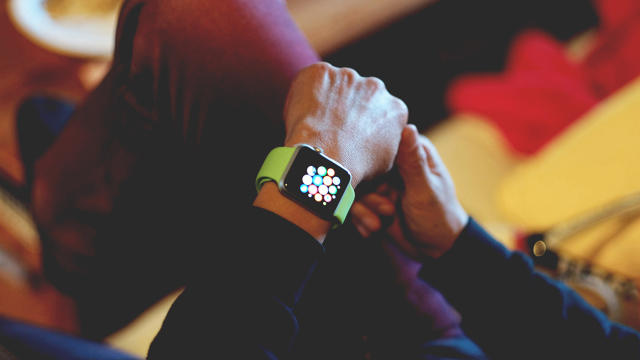
Evolving Into The Can’t-Leave-Home-Without-It Device
The biggest decision that Apple may face in designing the Apple Watch 2 is whether or not to give the device its own cellular connection. This would mean creating room for a cellular modem chip.
Glide CEO Ari Roisman believes Apple may see the Watch as a device that could eventually replace some or even all of the three things you don’t leave home without—your phone, your wallet, and your keys. In other words, the Watch might one day become a communication and app-running device, a payment and rewards device, and an identification and authentication device.
It’ll also be completely divorced from the iPhone. Apple has already telegraphed its interest in reducing the Watch’s dependence on the phone for connectivity and processing power. The Watch can already do Apple Pay payments sans iPhone, for example. Apps now run natively on the Watch.
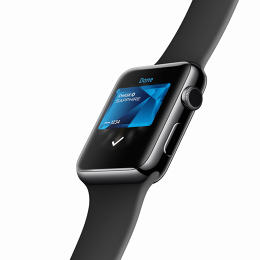
In order to continue gaining autonomy, the Watch will eventually need its own always-on Internet connection, and the closest thing we have to that is LTE cellular.
When the current Watch is connected to a Wi-Fi network trusted by the paired phone, it can make and take Wi-Fi calls, send and receive text messages, and use Siri. But outside of Wi-Fi range, the Watch must be connected to the phone via Wi-Fi to make and take cellular phone calls. With a cellular radio, calls and messaging could continue outside of Wi-Fi range.
The question is whether or not Apple can, or should, build cellular connectivity into the next Watch.
Technalysis’s O’Donnell points out that the modem chips are readily available. Qualcomm, for one, has designed modem chips specifically for wearables that use cat 0 cat 1 LTE technology, he points out.
Creative Strategies’ Bajarin believes that when the time is right, Apple will build its own LTE chip, which would be tightly integrated with the Watch’s processor (also made by Apple).
But there are real challenges to adding an LTE modem. “There’s the cost, and anytime you add an additional radio to a device, it’s a hit on the battery, so they’d have to deal with those issues,” O’Donnell says.
Creative Strategies’ Bajarin believes the additional battery drain caused by the modem is too high a bar to pass for the next Watch. He says the modem could cause thermal issues inside the device as well.
If Apple decides to design its own modem chip, Bajarin says the company faces an arduous testing and certification process with regulatory bodies like the FCC in the U.S.
Bajarin also isn’t convinced the market is clamoring for a cellular-connected Watch.
Apple doesn’t report how many Watches it’s shipped. On the very highest end of the estimates, some analysts say Apple shipped as many as 15 million of the devices in the first year of availability. The number could be much lower. IDC estimated Apple shipped 11.6 million Watches in calendar 2015. The point is, many of the next wave of buyers enticed by the Watch 2 will never have used a smartwatch before.
“I think most people are still wrapping their brains around the Watch,” Bajarin says. “I’m not sure most people even know they need a cellular radio.”
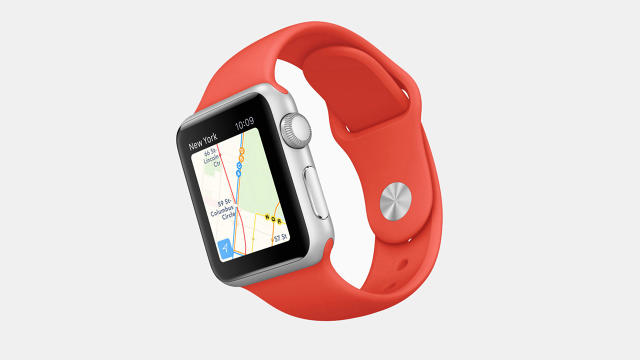
Location, Location, Location
The current Watch is also dependent upon the phone for its GPS radio. While the Watch’s fitness app is great, the lack of an on-board GPS radio is a real problem for runners, many of whom don’t want to take their phone and their Watch with them on runs.
The ability to get Maps information on the wrist is one of the Watch’s best features, but you have to have your Watch paired to an iPhone to make it work.
I’ve heard many Watch users say they’d like an on-board GPS radio, but adding the feature was nowhere near the top of the list of features that analysts believe will be added in the next Watch. Like any other radio, a GPS radio would pull from the battery and require precious space inside the Watch.
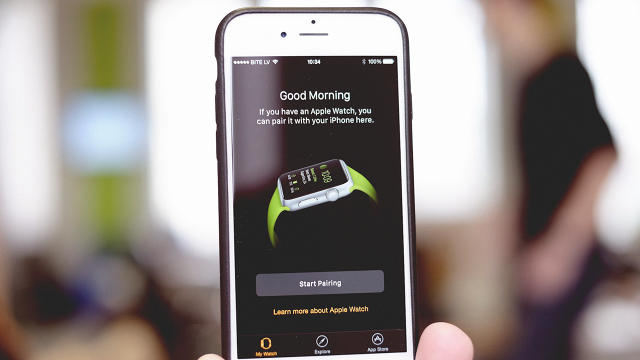
Becoming Your Key To The World
Techpinions’ O’Donnell points out that in later iPhones, Apple has installed a hardware “secure element” that contains encrypted identification information used for secure tokens in mobile payments. The Watch has this secure element, too. It also contains its own NFC (near field communication) chip, which it uses to exchange data with point-of-sale systems during mobile payments.
The Watch’s secure element and NFC chip, perhaps working in concert with the device’s heart rate sensor, could be used to authenticate the wearer to access all sorts of secure physical places or digital assets. As an identification and authentication device, the next Apple Watch might make its biggest gains in usefulness.
“So your watch becomes a digital key to unlock your phone or PC, or even, theoretically, a website,” O’Donnell says. He points out that standards bodies are now developing authentication standards that will enable authentication devices to speak the same language as the security systems that protect physical and digital assets.

While the secure element and NFC chip would manage and communicate transaction data, the Watch’s heart rate sensor might be used to discover the wearer’s unique heart rate patterns. This would allow the Watch to tell a secure entry point that the person wearing the Watch is who he says he is.
“It can’t be spoofed or hacked because you are wearing it, so it knows it’s yours,” O’Donnell says.
So a future Apple Watch generation will tell your car it’s you and open the door, as well as communicate your seat position, temperature, and entertainment preferences.
Similarly, your Watch could identify you and communicate your transportation credit at the turnstile to the subway. Some airline apps can already display your boarding pass bar code on the Watch, but this is likely just the beginning. With secure identification technology in use, the whole process of checking in and moving through security might get much smoother.
The Watch might act as your key to secure assets at work. This could mean anything from limited-access facilities to sensitive files stored in a server. Or the Watch might authenticate you for online resources that normally require you to enter one of your many username and password combinations.
The secure technology needed for authentication applications in the Watch isn’t so different from that already used for Apple Pay, and the necessary partnerships and network handshakes aren’t so different than those Apple has formed with credit card clearinghouses and banks. The groundwork has been laid.
And authentication might flow smoother if the Watch were more independent from the iPhone. In the real world, authentications happen quickly (passing a turnstile, logging into a cloud system), and the Watch’s Bluetooth connection to the phone for network access could slow things down. It also increases the number of possible entry points for hackers and other security threats. So here again, the Watch needs a cellular connection to unlock all this authentication magic.
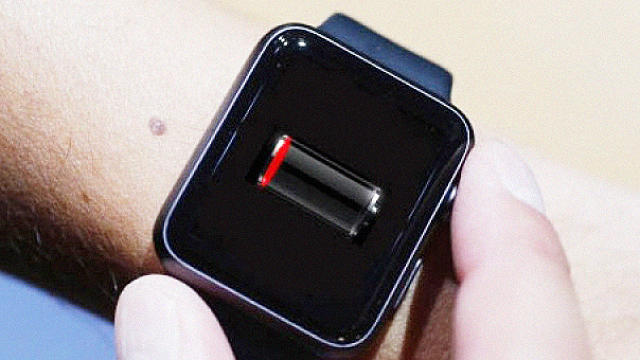
Battery Barrier
The factor that most limits the potential of the Watch is the battery. New features—an LTE modem, for example—increase the amount of power required from the battery. And the bigger the power requirement, the larger the battery must be, which presents serious design problems to a company that loves making things thinner and smaller.
The current Watch, by most accounts, can last through a whole day of moderate use before needing a recharge. Tim Cook has said the Watch’s battery can last up to 18 hours. The Watch uses the same type of Lithium-Ion battery used by millions of other mobile devices, and science has already squeezed all the big gains in power output from the technology.
“There’s no Moore’s Law for batteries, because it’s chemistry, and chemistry doesn’t evolve that quickly,” Technalysis’s O’Donnell says.
The only real remedy to the power challenge is to make the components do what they do with less juice.
“Over generations, the Watch can get smaller as they get better power efficiency from the chipsets,” Bajarin says.
There’s also the iteration factor: “As with any technology, they can miniaturize as they get better at designing the product, so I wouldn’t be surprised if they go in that direction,” Bajarin says.
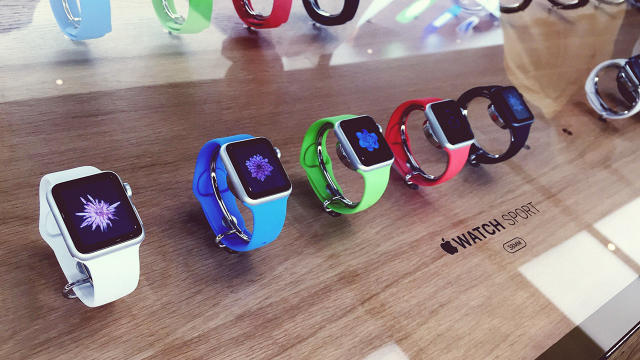
Tiny Tech, Tough Choices
The first version of the Apple Watch showed real promise. It is the best smartwatch on the market today, being far ahead in software/hardware integration, aesthetic design, and pure functionality. The device, which went on sale on April 24, 2015, sold better than the first iPhone in its first year. But the Watch is still more or less a notifications screen and a remote control for the iPhone.
When the company unveils the next version of the wearable device, we’ll likely see a faster, more power efficient, more functional, and more autonomous wearable device.
We’ll also see the results of some tough choices concerning which major features can (or should) be added to bring the Watch closer to the type of highly personal tech device envisioned by Apple. The value of any added feature must be weighed against its impact on the form factor and power requirements of the product. And there’s just not much room to move in such a small device.
It’s hard to imagine Apple making the next Watch thicker, but it might make one with a larger surface area, says IDC’s Mainelli in an email to Fast Company. This idea could kill a few birds with one stone.
“I could see them offering a watch with a larger face (with a resulting larger battery),” Mainelli says. “Just as they eventually moved to offer larger-screened iPhones, I think it is inevitable that they will acknowledge that some people not only want more screen real estate on their Apple Watch, but that many people actually prefer larger watches from a fashion perspective, too.”
The current Apple Watch comes in two sizes: 42 mm and 38 mm. Perhaps Apple will reserve advanced features like the LTE and GPS radios for a larger Watch, while selling smaller versions with smaller batteries and narrower feature sets.
Apple’s engineers have been carefully weighing these options for a long time, and probably still are today. I wouldn’t be surprised if there’s an Apple Watch LTE prototype sitting on a table somewhere in Cupertino. We’ll have to wait a few more months to find out if such a device becomes a real product.
Watch how Apple has morphed over the years
Fast Company , Read Full Story
(46)













